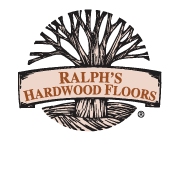In 1926, American inventor Dr. Waldo Semon was trying to bond rubber and metal. He mixed vinyl chloride with other chemicals, and, after experimenting some more, invented polyvinyl chloride (PVC), which is now better known as vinyl.
At first, vinyl was used in shock absorbers and creating synthetic tires. During World War II, it was even used to insulate wires.
Vinyl was first featured on the home décor scene in 1933 at the “A Century of Progress” Exposition in Chicago, where the vinyl composite tile was described as resilient, affordable, and easy to install. Vinyl still has all these characteristics today.
However, vinyl was still pretty rare at the time, so it didn't really become widely used until the 1940s, when it quickly became extremely popular. It was the perfect choice for a busy home since it was affordable, easy to maintain, and stood up to foot-traffic well.
In the 1960s, manufacturers decided to make the vinyl flooring even more attractive. During this period, some of the best vinyl flooring technology was developed, such as cushioned vinyl floors and “no-wax” floors.
The technology developments continued into the 1970s with the invention of the first vinyl plank flooring. This brought a variety of new décor options since homeowners could get the benefits of vinyl with the wood flooring look.
Throughout the 1950s, 60s, and 70s, vinyl flooring became the most popular flooring material among homeowners. However, in the 1980s, a problem was revealed - almost all vinyl tiles contained asbestos.
Fortunately, a new version without asbestos was quickly developed. And since vinyl was still affordable, many homeowners replaced their old tiles with the new version. Note that any vinyl tile flooring that was installed before the mid-1980s should be removed by a professional.
Modern Vinyl Flooring
Today, vinyl still has the same qualities it’s had for years, with all issues removed. It is currently one of the most popular home flooring options, especially in the bathroom and kitchen.
Also, new versions of vinyl flooring have additional options for upgrading your space. You can pick luxury vinyl tiles and planks to add an elegant look. Here are some exciting new features of vinyl:
Waterproof
Many of today’s vinyl floor materials are completely waterproof. This makes it even easier to maintain and clean and eliminates the issues of corrosion or staining.
Static conductivity
This is a pretty new development. The planks or tiles channel the static charge away through the floor.
Scratch-resistant
Some vinyl floors have a specialized wear layer that protects against scuffs and scratches.
Slip-resistant
New vinyl floors often also have a slip-resistant coating that gives it a shiny look without being a source of danger in the home.
Eco-friendly
With 100% vinyl, many homes can meet green building standards.
Versatile
Modern vinyl is available in more patterns and colors than ever before. Designs can look like natural materials and can be made in various shapes and sizes, so you can combine patterns and shades to get a custom appearance.
Cost-effective
The fact that this flooring material is still so affordable, even with many upgraded vinyl options available today, makes it an ideal choice..
Would you like to talk with us about vinyl flooring? We’re here to help. Contact us at 920-984-3383, 800-354-9902, or info@ralphshardwood.com. Showroom appointments are available.
Image: Shutterstock















